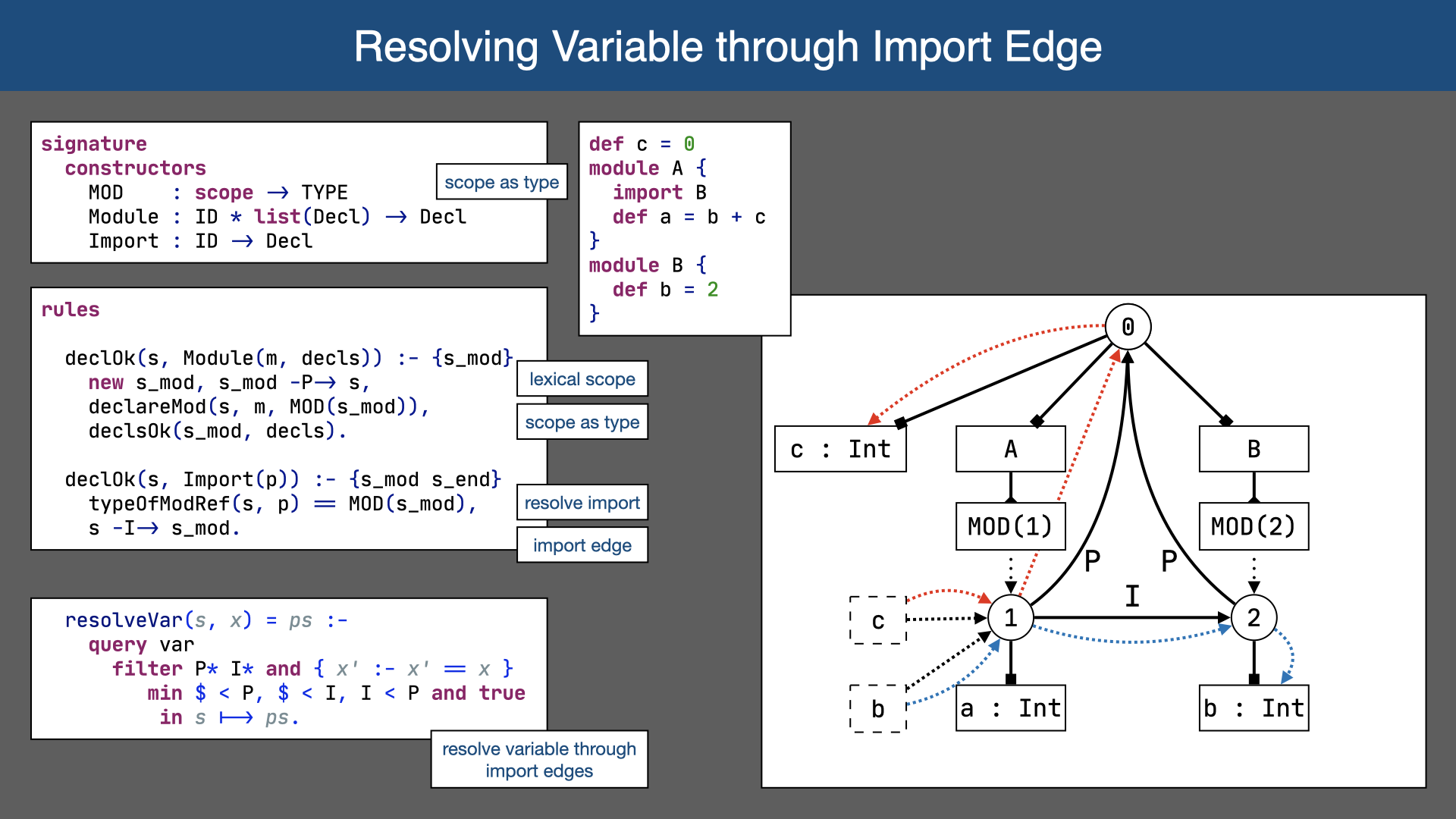In this lecture we study name binding and name resolution. We introduce the notion of a scope graph to represent the bindings in a program and name resolution queries in a scope graph to resolve references (uses of names) to declarations (definitions of names).
In addition to the lecture (see the recording on BrightSpace), see the talks about scope graphs below. The Curry On 2017 talk provides a somewhat higher-level presentation of the resolution calculus that is at the basis of resolution scope graphs. See also to Statix tutorial listed on the page of the previous lecture.
Slides
Scopes as Types
Presentation of the OOPSLA’18 paper that introduced Statix.
Scope Graphs
A high-level introduction to scope graphs and the resolution calculus.
Towards Semantic Editor Services
Explores alternative interpretation of Statix specifications for editor services such as semantic completion.
References
-
Scope graphs are a promising generic framework to model the binding structures of programming languages, bridging formalization and implementation, supporting the definition of type checkers and the automation of type safety proofs. However, previous work on scope graphs has been limited to simple, nominal type systems. In this paper, we show that viewing scopes as types enables us to model the internal structure of types in a range of non-simple type systems (including structural records and generic classes) using the generic representation of scopes. Further, we show that relations between such types can be expressed in terms of generalized scope graph queries. We extend scope graphs with scoped relations and queries. We introduce Statix, a new domain-specific meta-language for the specification of static semantics, based on scope graphs and constraints. We evaluate the scopes as types approach and the Statix design in case studies of the simply-typed lambda calculus with records, System F, and Featherweight Generic Java.
-
In previous work, we introduced scope graphs as a formalism for describing program binding structure and performing name resolution in an AST-independent way. In this paper, we show how to use scope graphs to build static semantic analyzers. We use constraints extracted from the AST to specify facts about binding, typing, and initialization. We treat name and type resolution as separate building blocks, but our approach can handle language constructs -- such as record field access -- for which binding and typing are mutually dependent. We also refine and extend our previous scope graph theory to address practical concerns including ambiguity checking and support for a wider range of scope relationships. We describe the details of constraint generation for a model language that illustrates many of the interesting static analysis issues associated with modules and records.
-
We describe a language-independent theory for name binding and resolution, suitable for programming languages with complex scoping rules including both lexical scoping and modules. We formulate name resolution as a two-stage problem. First a language-independent scope graph is constructed using language-specific rules from an abstract syntax tree. Then references in the scope graph are resolved to corresponding declarations using a language-independent resolution process. We introduce a resolution calculus as a concise, declarative, and languageindependent specification of name resolution. We develop a resolution algorithm that is sound and complete with respect to the calculus. Based on the resolution calculus we develop language-independent definitions of α-equivalence and rename refactoring. We illustrate the approach using a small example language with modules. In addition, we show how our approach provides a model for a range of name binding patterns in existing languages.
